Proactive PR vs Reactive PR: Build Quality Links With Digital PR
Daniel Trick
Feb 09, 2024
9 min read
An effective digital PR strategy will contain both proactive and reactive elements to help earn your clients coverage and links. But what’s the difference between reactive and proactive PR?
Proactive PR is all about taking the initiative and actively seeking exposure through planned digital PR campaigns.
Reactive PR is when you capitalize on opportunities for exposure and media coverage by responding to something that has already happened.
Both of these tactics are important for digital PR and SEO. In this guide, we’ll reveal how you can use them to get great results for your clients.
We’ll cover:
- What reactive PR involves
- What proactive PR involves
- Examples of Reactive PR
- Examples of Proactive PR
- How proactive and reactive digital PR help SEO
- How to use digital PR for link building

What Is Reactive PR?
Reactive public relations is when you respond to external events, breaking news, or trends. The aim is to positively impact a brand’s reputation, gain exposure, and enhance a website’s search engine optimization (SEO).
For example, if a trending topic is relevant to your client’s industry, you can quickly create a piece of content that provides expert commentary. You can gain attention from websites and publications covering the topic by contributing valuable insights.
This can be a great way to secure backlinks from high-authority domains. The journalist or blogger will usually link back to your content in their article.
You can also respond to journalist requests for expert opinions on social media and platforms like HARO. This can help you generate exposure and backlinks from high-authority publications.
Reactive PR is also important when a client receives negative coverage or criticism. You can react to the public relations crisis and manage the situation to minimize the damage to the brand’s reputation.
What Is Proactive PR?
Proactive public relations is when you take the initiative to generate positive coverage and backlinks. There is more planning and relationship-building involved.
For example, you might conduct original research and use blogger outreach and other digital PR strategies to amplify the reach of the content. This can be a great way to build backlinks, drive more traffic, and establish your client as an authority in their industry.
A good PR professional is proactive. Don’t just wait for opportunities; create them.
— Carly Martinetti (@PRcarly) May 17, 2023
Proactive PR can also involve campaigns to generate publicity around newsworthy events. If your client is launching a new product or service, you can distribute a press release to generate media coverage.
This coverage can increase brand awareness and boost your client’s search engine rankings through backlinks from news sites and online publications.
Check out our detailed digital PR guide for a more detailed breakdown of the strategies involved in proactive and reactive PR and our guide to PR campaign ideation to see how PRs come up with these creative and eye-catching campaign ideas.
Examples of Reactive PR
The best way to understand the difference between reactive and proactive PR is to look at real-life digital PR examples.
Here are five examples of companies successfully using reactive PR to generate publicity and backlinks.
IKEA’s Water Bottle Campaign Inspired by Cristiano Ronaldo
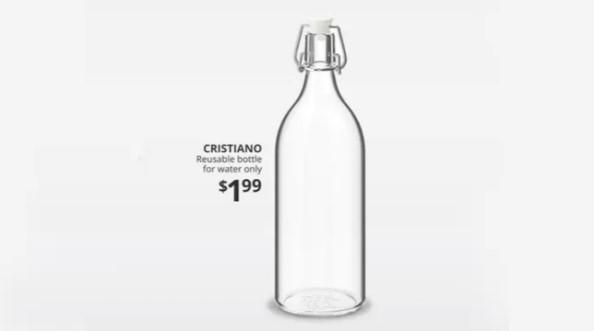
During Euro 2020, Cristiano Ronaldo replaced Coca-Cola bottles with water during a press conference. The footage went viral and became one of the tournament’s most memorable moments.
IKEA quickly capitalized on the viral moment by releasing a water bottle named Cristiano with the tag ‘for water only.’ The campaign went viral on social media and generated coverage in publications around the world.
The campaign is an excellent example of how brands can use reactive PR strategies to capitalize on opportunities to engage with current events.
National Jeweler’s Engagement Ring Analysis
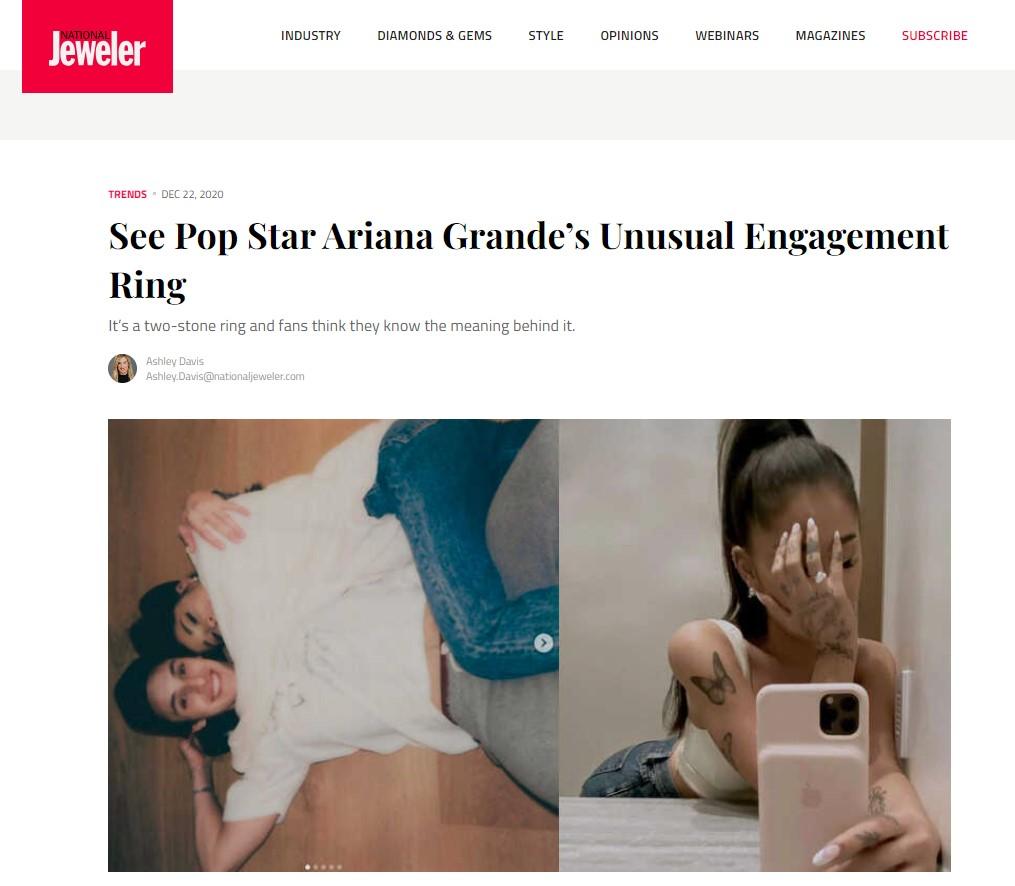
In December 2020, pop star Ariana Grande announced her engagement with a series of photos on Instagram. The news caused a big buzz online.
In a great example of reactive PR, the jewelry company National Jeweler published a blog post discussing the details of the engagement ring at the peak of media attention and public interest.
The timely content helped National Jeweler to tap into the ongoing buzz and enhance its backlink profile with links from news sites.
Penguin Random House’s “Unburnable” Book Initiative
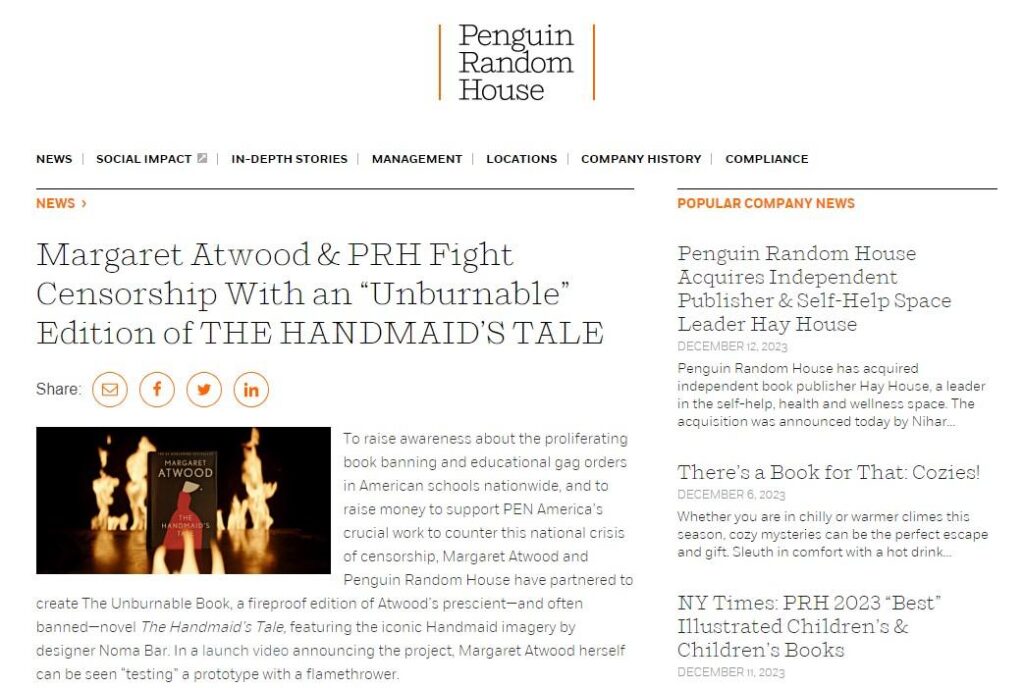
In a stand against the rise of banning books in American schools, Penguin Random House introduced an “unburnable” edition of The Handmaid’s Tale by Margaret Atwood.
The special edition release was aimed to make a statement on the importance of safeguarding free speech. The book was auctioned at Sotheby’s, with the proceeds donated to the charity PEN America.
The reactive PR campaign helped to generate positive publicity and significant media coverage. It also helped to raise awareness around an important issue.
Hello Fresh Taps into the Custard Toast Trend
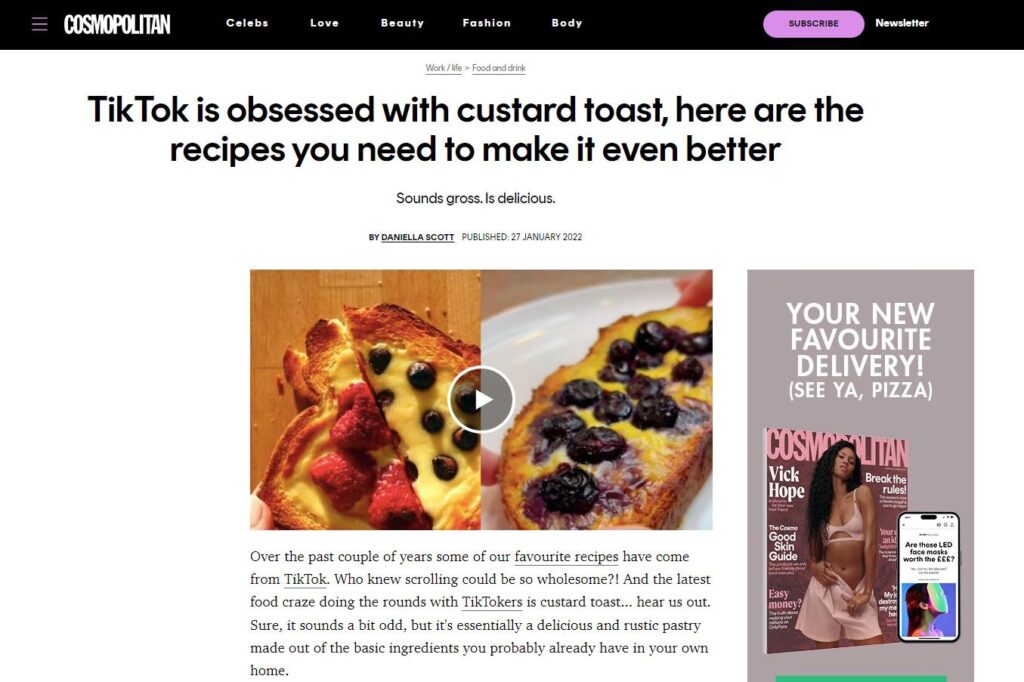
Reactive PR is about more than just responding to news events. Hello Fresh is an excellent example of how a timely piece of content can make a big impact.
With custard toast videos going viral on TikTok, Hello Fresh produced a blog post that detailed the best recipes for the viral snack. The blog post was mentioned in stories in major publications like Cosmopolitan and HuffPost.
This reactive campaign highlights how brands can leverage trending topics to boost visibility and secure high-authority backlinks.
Fluttr’s Thought Leadership on Online Well-Being
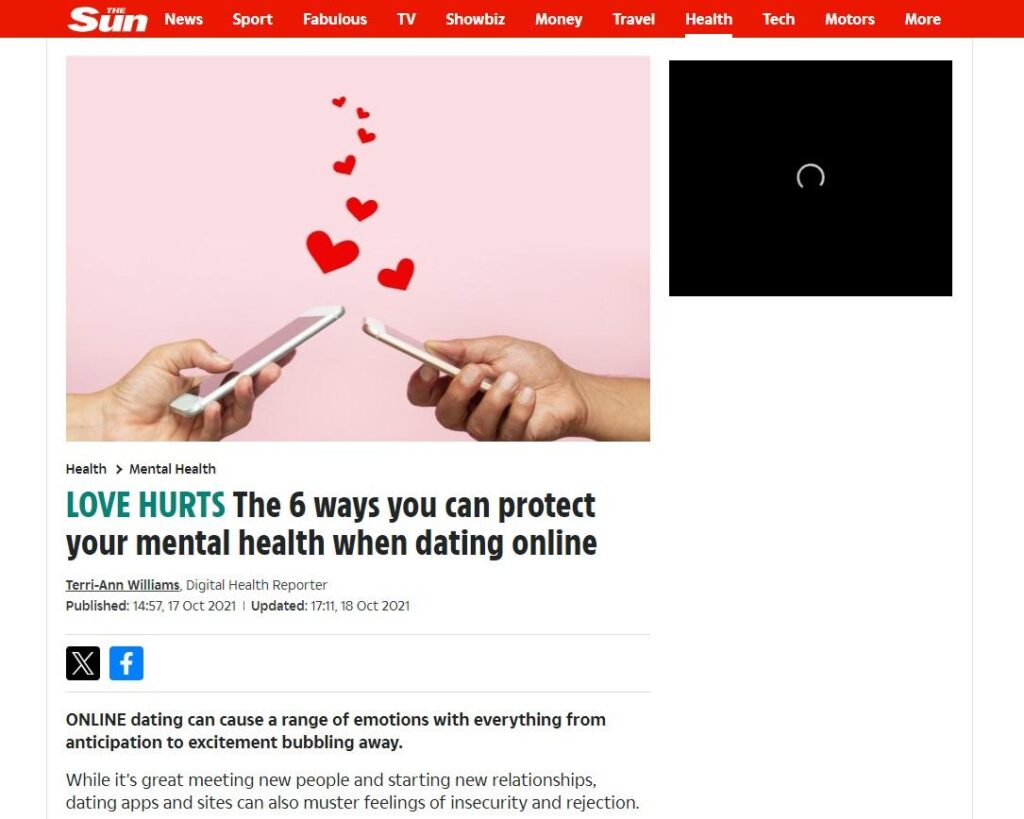
The ethical dating app Fluttr is a good example of how reactive PR can be used for thought leadership. Fluttr CEO Rhonda Alexander has shared insights on user well-being in multiple news outlets and publications.
When The Sun sought expert commentary on mental health and online dating, Rhonda Alexander responded with actionable tips for users. The Sun article featured a link to the Fluttr website and enhanced the brand’s reputation as a go-to source for industry insights.
Examples of Proactive PR
Proactive PR typically requires more planning and resources. Here’s how five brands have successfully used proactive PR campaigns to generate exposure and backlinks.
Interflora’s Initiative for Father’s Day
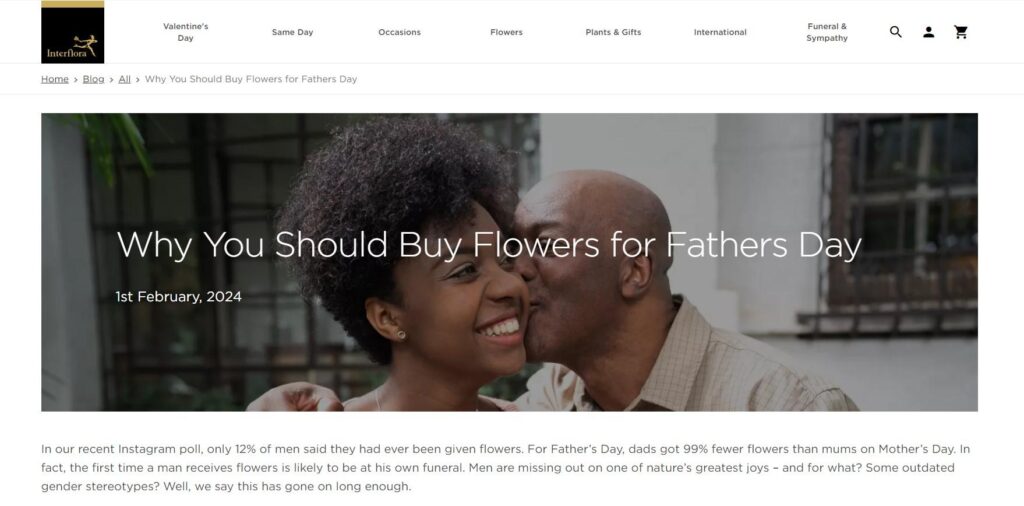
The flower delivery company Interflora used original research from social media polling to raise awareness and boost sales in the run-up to Father’s Day. The brand launched a campaign highlighting that 88% of men have never received flowers.
Interflora partnered with influencers to amplify the campaign and challenge social norms. It’s an excellent example of how a brand can use a proactive PR strategy to promote its products and generate a ton of media coverage.
McCarthy Stone’s Unique Use of Internal Data

Original research is one of the best ways to utilize proactive PR. You can publish a unique study or report on your site, issue a press release, and use outreach to drive traffic and build backlinks.
McCarthy Stone used this strategic approach by tapping into its data on UK beauty spots to highlight the nation’s best stargazing locations. The company timed the release of the study with an upcoming full moon to maximize the impact.
The study was featured in local news outlets and national publications like The Daily Express.
Dove’s The Selfie Talk Campaign
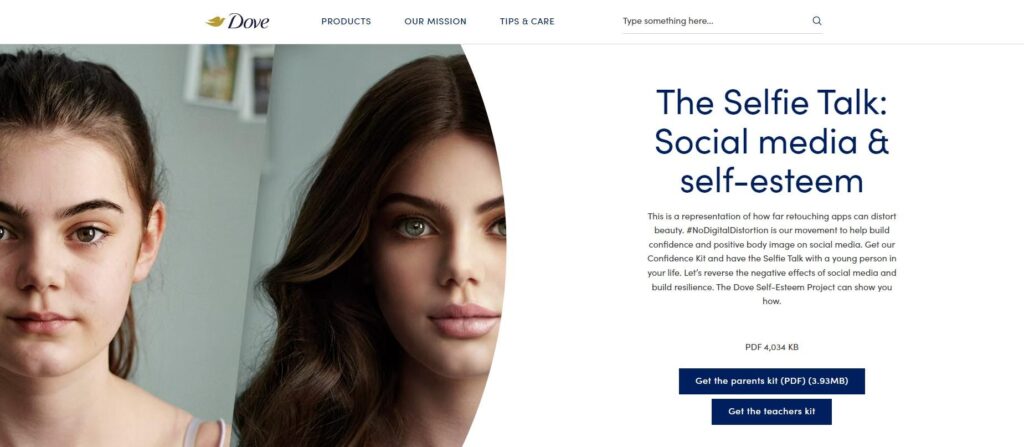
Dove is a brand that’s well known for its impactful digital PR campaigns. In 2021, the beauty brand launched its provocative The Selfie Talk campaign to address the unrealistic pressures young girls face online.
The campaign is part of the brand’s drive to challenge beauty industry norms and promote positivity and well-being. It landed Dove a ton of positive publicity and media mentions.
Ken Bromley Art Supplies’ Infographic

Infographics are still one of the most effective ways to make data more engaging and shareable. This is highlighted by the Ken Bromley Art Supplies campaign that used social media analytics to map the world’s most popular artists by country.
High-authority websites like CreativeBloq and DesignTaxi picked up the infographic. The campaign shows how a creative infographic can engage audiences and attract links from respected media outlets.
Company Check’s Business Census
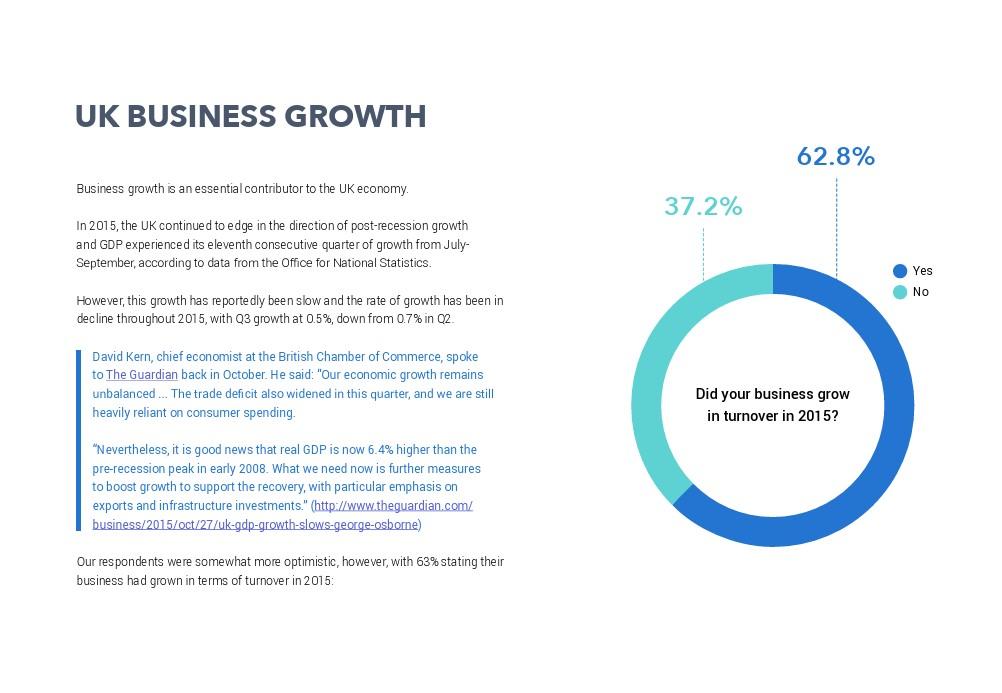
UK credit report firm Company Check launched a survey of 3,000 business owners as part of its Business Census.
Each question in the survey was designed to provide insights with a strong PR angle. Like the example above, the responses generated newsworthy headlines like ‘62.8% of Businesses Grew Their Turnover in 2015.’
The report was featured in Forbes, The Financial Times, and other top-tier publications. It also positioned Company Check as a notable source of business insights.
How Proactive and Reactive Digital PR Help SEO
Both digital PR approaches can help you get exposure for your clients. But they can also provide a significant boost to visibility in search results.
The big thing here is backlinks. The more high-quality backlinks pointing to a website, the more likely it is to rank high in search results.
A study by Backlinko revealed a direct correlation between search ranking and the number of backlinks a page has:
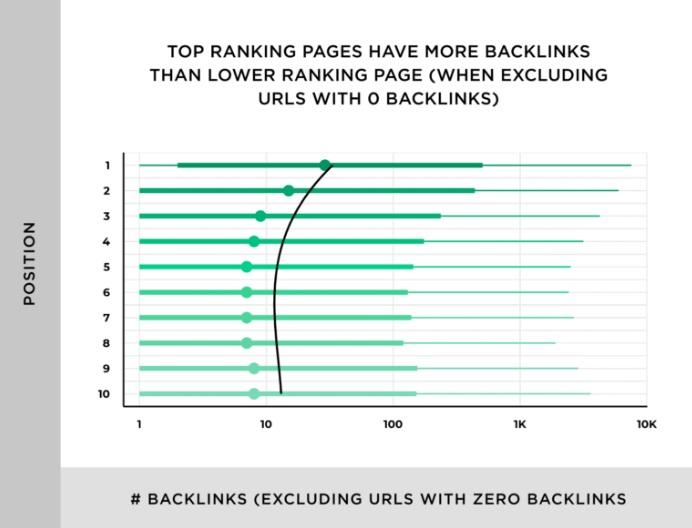
But it’s not just a numbers game. Inbound links from relevant, authoritative websites have more impact than those from low-authority or spammy websites.
Digital PR can be super effective for SEO because it helps you get the type of high-quality links that can make a real impact on search ranking.
For example, if you focus on reactive PR and respond quickly to trends in your industry, you can capitalize on the demand for insights. That could involve responding to journalist requests for commentary or creating a timely piece of content.
That can lead to backlinks from reputable websites and publications. In a recent survey of SEOs, reactive PR was ranked as one of the most effective link building techniques:
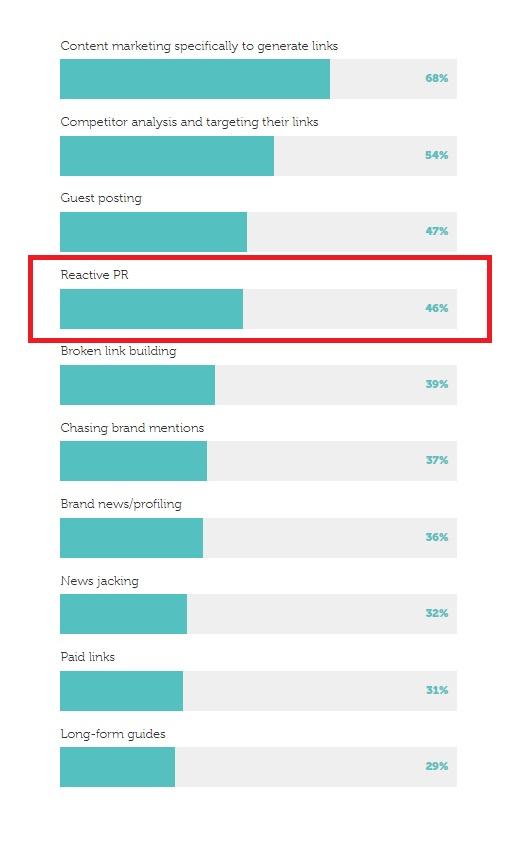
With proactive PR, you can create industry reports or infographics and use outreach to spread the word and get other websites to link back to your client’s website.
How To Use Digital PR for Link Building
Here’s a closer look at the specific digital PR strategies you can use for link building.
Capitalizing on Trending Topics
Just like the IKEA example, sometimes you can capitalize on trending news or events. You can quickly create content that adds to the conversation or share an expert opinion.
With multiple publications and websites covering the topic, there’s a good chance your content can be picked up and linked to.
HARO
Help A Reporter Out (HARO) is one of the most popular digital PR tools. It connects journalists with expert sources for their articles. And it can be a great way to get your client featured in top publications and earn high-quality backlinks.
You simply sign up as a source and respond to journalist requests relevant to your industry. When the journalist features your quote in their article, they will typically include a link to your website.
It can be difficult to get results on platforms like HARO. You need to be active and continually look for opportunities. You can use an expert quote service like we offer at fatjoe to save time responding to queries and securing links.
Creating and Distributing Press Releases
Press releases are still one of the most effective digital PR strategies. When your client is involved in something newsworthy, you can distribute a press release to let relevant publications know about it. That could be a new product launch, a company milestone, or the release of an industry report.
If news sites and industry publications pick up your press release, you can gain high-quality backlinks to your website.
Publishing Original Research
In the examples above, we covered a few brands using original research for proactive PR. By offering new insights, your content can become a unique resource that other websites want to link to.
This can significantly boost your backlink profile and position your client as a thought leader.
Creating and publishing original research requires time and resources. It’s important to be honest with your clients about when they can expect to see results.
It’s important to have the talk with clients about the fact that, if they’ve never done any proactive PR in the past, it may take time for them to start earning media coverage.
Sometimes the expectations can be out of whack. And, that can lead to a tougher conversation.#PRTips
— Michelle Garrett | B2B PR Consultant/Writer (@PRisUs) August 11, 2023
Responding to Industry News and Reports
You can earn coverage and backlinks by responding to industry news and reports. Creating timely content that offers analysis or commentary can attract the attention of relevant industry sites covering the topic.
This shows that your client is actively engaged in trending topics in their industry and can help you build natural backlinks.
Guest Posting and Blogger Outreach
Collaborating with and contributing to relevant industry sites is a tried and tested digital PR strategy. You can share your expertise on relevant industry sites and earn valuable backlinks.
Blogger outreach is a great way to drive referral traffic, generate exposure, and boost SEO performance. You’ll usually be able to include a link to your client’s site in the content or the author bio.
Getting Better SEO Results with Digital PR
Both proactive and reactive PR contribute to a comprehensive digital public relations strategy.
Proactive PR helps you set a strong foundation, while reactive PR is about capitalizing on opportunities.
You can use both approaches to attract high-quality backlinks and boost your client’s online presence.
Become a Pro at SEO
Join 65,000 others and learn the secrets to SEO success with our weekly blog posts.
